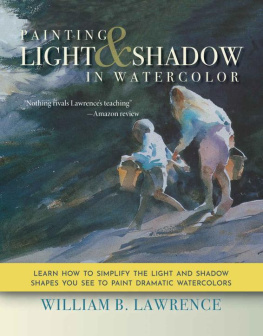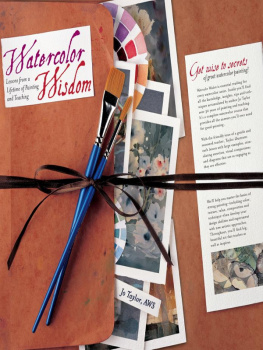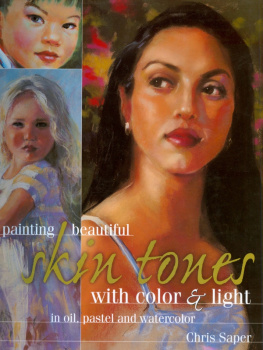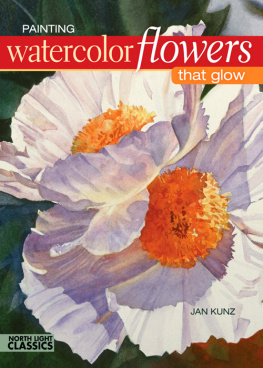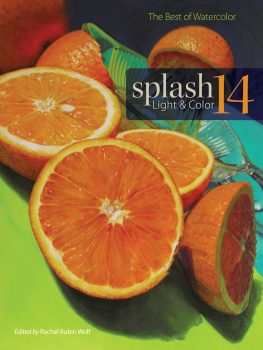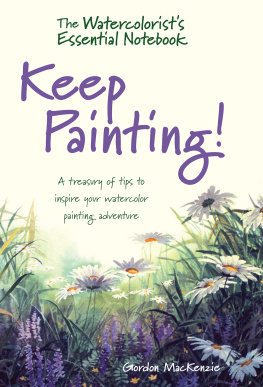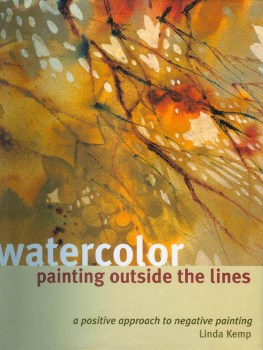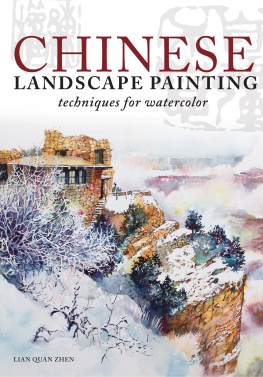William B Lawrence - Painting Light and Shadow in Watercolor
Here you can read online William B Lawrence - Painting Light and Shadow in Watercolor full text of the book (entire story) in english for free. Download pdf and epub, get meaning, cover and reviews about this ebook. year: 2022, publisher: Echo Point Books & Media, LLC, genre: Children. Description of the work, (preface) as well as reviews are available. Best literature library LitArk.com created for fans of good reading and offers a wide selection of genres:
Romance novel
Science fiction
Adventure
Detective
Science
History
Home and family
Prose
Art
Politics
Computer
Non-fiction
Religion
Business
Children
Humor
Choose a favorite category and find really read worthwhile books. Enjoy immersion in the world of imagination, feel the emotions of the characters or learn something new for yourself, make an fascinating discovery.
- Book:Painting Light and Shadow in Watercolor
- Author:
- Publisher:Echo Point Books & Media, LLC
- Genre:
- Year:2022
- Rating:4 / 5
- Favourites:Add to favourites
- Your mark:
- 80
- 1
- 2
- 3
- 4
- 5
Painting Light and Shadow in Watercolor: summary, description and annotation
We offer to read an annotation, description, summary or preface (depends on what the author of the book "Painting Light and Shadow in Watercolor" wrote himself). If you haven't found the necessary information about the book — write in the comments, we will try to find it.
Painting Light and Shadow in Watercolor — read online for free the complete book (whole text) full work
Below is the text of the book, divided by pages. System saving the place of the last page read, allows you to conveniently read the book "Painting Light and Shadow in Watercolor" online for free, without having to search again every time where you left off. Put a bookmark, and you can go to the page where you finished reading at any time.
Font size:
Interval:
Bookmark:



Rembrandt thought it more important to paint light than the objects that are seen by it.
Sir Joshua Reynolds, Discourses
WILLIAM B. LAWRENCE

ABOUT THE AUTHOR
William B. (Skip) Lawrence resides in Mt. Airy, Maryland. He was born in Baltimore in 1943, received B.F.A. at the Maryland Institute College of Art, Baltimore, Maryland (1965) and an M.A. at Towson State University, Baltimore, Maryland (1971). From 1965 through 1972 he taught in Howard County, Maryland. After leaving the public school system to devote his time to painting, he was persuaded to teach part-time at Prince Georges Community College, near Washington D.C. One evening watercolor class at his studio in Laurel, Maryland has grown to hundreds of national and international workshops since 1976, when he conducted his first workshop in Nags Head, NC. Today he conducts an average of 20 workshops annually. Summers are reserved for Maine and some painting time coupled with his popular summer workshops.
Skip is a member of the American Watercolor Society, the Southern Watercolor Society and the Baltimore Watercolor Society. He has always been driven to paint, but his real love is fly fishing and golf. Any one of these activities provide enough reward and frustration for a lifetime.
Published by Echo Point Books & Media
Brattleboro, Vermont
www.EchoPointBooks.com
All rights reserved.
Neither this work nor any portions thereof may be reproduced, stored in a retrieval system, or transmitted in any capacity without written permission from the publisher.
Copyright 1994, 2019 by William B. (Skip) Lawrence
Painting Light and Shadow in Watercolor
ISBN: 978-1-63561-858-7 (casebound)
Thanks to each artist for permission to use art.
Edited by Rachel Wolf
Interior design by Sherri Stoffer
Cover design by Alicia Brown
Cover art by William B. (Skip) Lawrence
METRIC CONVERSION CHART
| TO CONVERT | TO | MULTIPLY BY |
| Inches | Centimeters | 2.54 |
| Centimeters | Inches | 0.4 |
| Feet | Centimeters | 30.5 |
| Centimeters | Feet | 0.03 |
| Yards | Meters | 0.9 |
| Meters | Yards | 1.1 |
| Sq. Inches | Sq. Centimeters | 6.45 |
| Sq. Centimeters | Sq. Inches | 0.16 |
| Sq. Feet | Sq. Meters | 0.09 |
| Sq. Meters | Sq. Feet | 10.8 |
| Sq. Yards | Sq. Meters | 0.8 |
| Sq. Meters | Sq. Yards | 1.2 |
| Pounds | Kilograms | 0.45 |
| Kilograms | Pounds | 2.2 |
| Ounces | Grams | 28.4 |
DEDICATION
To my wife, Shauna, and our children, Carly and Joshua
ACKNOWLEDGMENTS
My thanks to: My mother, Jeanne Marie, and father, Wolford Wesley, for supporting me in everything I wanted to do. Mom always wanted to go to art school, but never had the opportunity. She made certain that I got the chance and then became my student. For the last 20 years of Dads life, he was not only my friend, but framer.
Morris Green, my high school art teacher, who taught me much as student and peer.
Don Stone for reminding me that art is the ultimate goal of artists and watercolor is just a medium.
Edgar A. Whitney, my first watercolor teacher, for giving me a solid foundation upon which to grow as an artist.
Christopher Schink for moral support and helping me to confirm or clarify many ideas.
Thousands of students who encouraged me to write this book even though I sometimes confused them as my instruction evolved. Especially Jack Futterman, who has directed me in the fine art of logical thought and communication.
Rachel Wolf, my editor, for her help and encouragement as I ventured into unfamiliar territory.
CONTENTS

While I was painting in Maine one summer, two Mainers happened to meet within earshot of where I was working. One said to the other, Where you goin? Response, I dunno. To which the first replied, How you gonna know if you got theyya?
It is important to know where were going as painters. Important for several reasons. One is we want to be able to evaluate progress. Without a goal it is impossible to make an evaluation of success or failure. It is important to be specific concerning a goal. Vague generalizations are as worthless as no goals. The person who says his or her goal is to do a good painting is really only hoping to do a good painting. The number of elements that make up a painting are too numerous for us to consider simultaneously while in the process of painting. Rather, we must decide on one or two elements that will be of concern in a piece of work, and allow all other elements to take care of themselves. How successfully these peripheral elements are handled depends largely on experience experience gained when these other elements were of ultimate concern and given our undivided attention.
The elements we choose to feature in a painting basically come from one of two sources: formal design elements or expressive goals. Formal elements are line, value, color, texture, shape, size and direction. These are the elements that, no matter what the source, ultimately must be used for painting. It would take a lifetime to explore the possibilities provided by these formal elements alone.
Expressive goals are more personal and perceptual. Two people look at Manhattan. One feels anxiety, the other exhilaration. Since there are no tubes of anxiety or exhilaration available for purchase, painters must translate these perceptions into elements of color, line, direction, etc. Whether your goals are founded in formal elements or are expressive goals, it is wise to decide where youre goin.
I paint because it interests me. I cant find anything that interests me more. Painting isnt fun, though sometimes the results are funny. Painting is frustrating, rewarding, calculating, spontaneous, revealing, obscure, hard work and sometimes relaxing. Dedicating yourself to this quest makes a lot more sense if you have a clear objective. We dont all paint for the same reason. If its your goal to make money, you should look to those who have been a commercial success. Parade magazine published the salaries of some notables and gave P. Buckley Mosss income as $500,000 yearly. If your goal is membership in national organizations of watercolorists, you should perfect your watercolor techniques. To win awards, you should paint large. But please dont take these suggestions as gospel. My advice is not offered to tell you how to accomplish a goal, but rather to encourage you to clearly identify your goal.
Avoid thinking of yourself as a watercolorist. Your objective is not to become the best technician of the medium of watercolor, but to be the best
Next pageFont size:
Interval:
Bookmark:
Similar books «Painting Light and Shadow in Watercolor»
Look at similar books to Painting Light and Shadow in Watercolor. We have selected literature similar in name and meaning in the hope of providing readers with more options to find new, interesting, not yet read works.
Discussion, reviews of the book Painting Light and Shadow in Watercolor and just readers' own opinions. Leave your comments, write what you think about the work, its meaning or the main characters. Specify what exactly you liked and what you didn't like, and why you think so.

